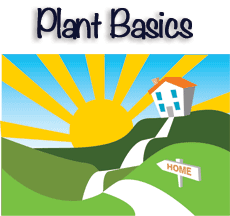 If you have indoor plants you may understand the comfort and hominess they bring to a house or condominium; they help to make a house a home. So here are three quick tips on what you should do to take good care of your plants.
If you have indoor plants you may understand the comfort and hominess they bring to a house or condominium; they help to make a house a home. So here are three quick tips on what you should do to take good care of your plants.
The Goldilocks Approach To Indoor Plant Nurturing
Plants depend on getting water to survive. They literally exist on water air and sunlight and not much more. However, there is the possibility of too much of a good thing. Some indoor plants prefer direct sunlight while others need to have some shade. Some plants are optimized for desert climates and others for cooler, wetter regions. It is important to have the right amount of water to keep them green and fresh. Too much water for some plants is almost worse than no water at all.
The quality of air is more consistent throughout the world in the sense that it contains the gases that plants use with sunlight and water to build the structures of their cells and keep growing. The one thing to consider about the air that your plants breathe is the temperature. Tropical plants will suffer and whither in a cold winter draft. Likewise, the hardier plants of cool climates may not do well if they are located too close to a radiator. Get the conditions for your plants right and they will thrive and grow.
Room For The Roots
It is also important to have adequate rom for the roots of your chlorophyll-creating companions. The roots of plants are designed to secure them to a fixed point on the ground and to draw in water and soil based nutrients across the surface area of each root. This works best when the roots have space between them to soak up all of the goodness that is around them.
When you have too small a container for them the roots become a solid mass and loose the ability to function effectively. The result will be that growth will stop and the plant will slowly die. Be ready to provide pots of increasing size and transplant your growing greenery before you get to the point of having more roots than soil in the pot.
Get The Soil For The Occasion
It also helps your plants to have the right material in which to grow. The best soil for potted plants may not necessarily be that which they have in the wild. Planting in a garden bed or growing free in the wild allows open transport of nutrients throughout the roots as well as unrestricted growth. Potting soils with materials such as perlite, clay or organic matter are popular alternatives that are designed to give nutrients to the roots of your potted plants, retain moisture and to create aeration for the roots.
Take care of your plants and they will bring comfort into your home. Each type of plant has its own best conditions and it pays to do a little research before taking them in; you will have either a limp dry rag of vegetation that cost too much down at the garden center or you have a fine investment in a beautiful blossoming indoor plant of a companion that helps to turn your house into a home.



About The Author: Kenneth Le
More posts by Kenneth Le